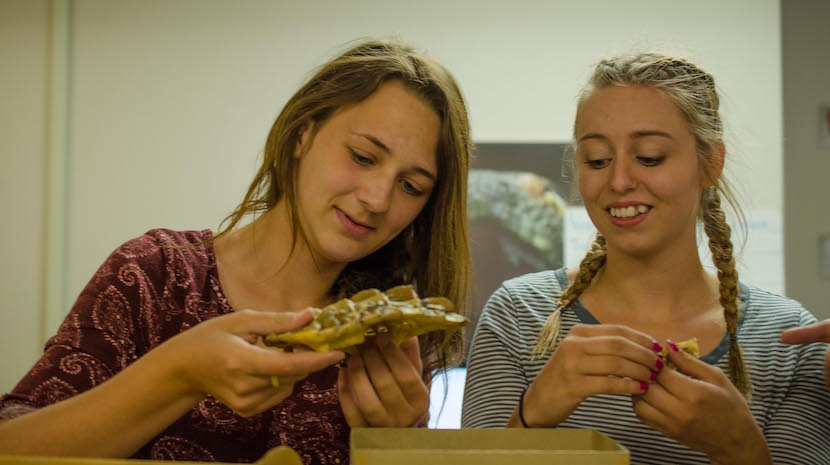NASA funds science-based internships for high school girls at Idaho Museum of Natural History
August 8, 2016

POCATELLO – The NASA Idaho Space Grant Consortium (NASA ISGC) has generously funded a pilot intern program for young women in the Idaho Virtualization Lab (IVL), a research group within the Idaho Museum of Natural History at Idaho State University.
The IVL uses 3-D scanning and modeling technology to create digital copies of museum specimens. NASA actively researches 3-D scanning, modeling, and printing technology for use on space missions. For example, astronauts can only take so much cargo with them when traveling to the space station. If something goes wrong, or they simply need a tool or part they do not have, they could use this technology to 3-D print exactly what they need in space.
By teaming up with NASA ISGC, the museum is helping to prepare young women for careers that further the use of 3-D technology or careers in science, technology, engineering, and mathematics.
“How it works is that young women, still in high school, apply for summer positions in the IVL. They are trained and mentored by our professional staff to work as 3-D scanning technicians. This sort of opportunity is rare in the United States and the only one of its kind in Idaho,” said museum Education Specialist, Becky Hansis-O’Neill.
This summer the museum has hired two interns, Lili Pruett and Shania Jackson.
“This job is really fun because I’m already making up my mind about what I want to do in college,” Pruett said.
Pruett has been debating studying paleontology and archaeology. Working in the IVL has given her exposure to both fields, helping her decide which subject is right for her.
Jackson is interested in physical therapy and using 3-D technology to make custom prosthetics for patients. The internship has really piqued her interest in anatomy and physiology.
“It’s pretty interesting. I’ve learned a lot. I took a class where we learned all the human bones, but here I’ve learned about animals,” Pruett said. “Their bones are so different.”
Their trainer and mentor, Jesse Pruitt, has been pleased with their work.
“I have been surprised with how quickly they became adept at using the laser scanners. They both work fast while maintaining high quality scan data,” Pruitt said.
The grant will continue through Summer 2017 and the museum will hire more interns next summer. If the project continues to be successful the museum will seek more funding to make it a permanent program.
If you or a high school student you know want more information on this program please contact Becky Hansis-O’Neill at (208)282-2195 or hansreb3@isu.edu.
Photo Cutline Information: Lili Pruett (left) and Shania Jackson (right) join the Idaho Virtualization Lab staff as they prepare to scan the museum’s reptile specimens. Photo Credit: Becky Hansis-O’Neill

